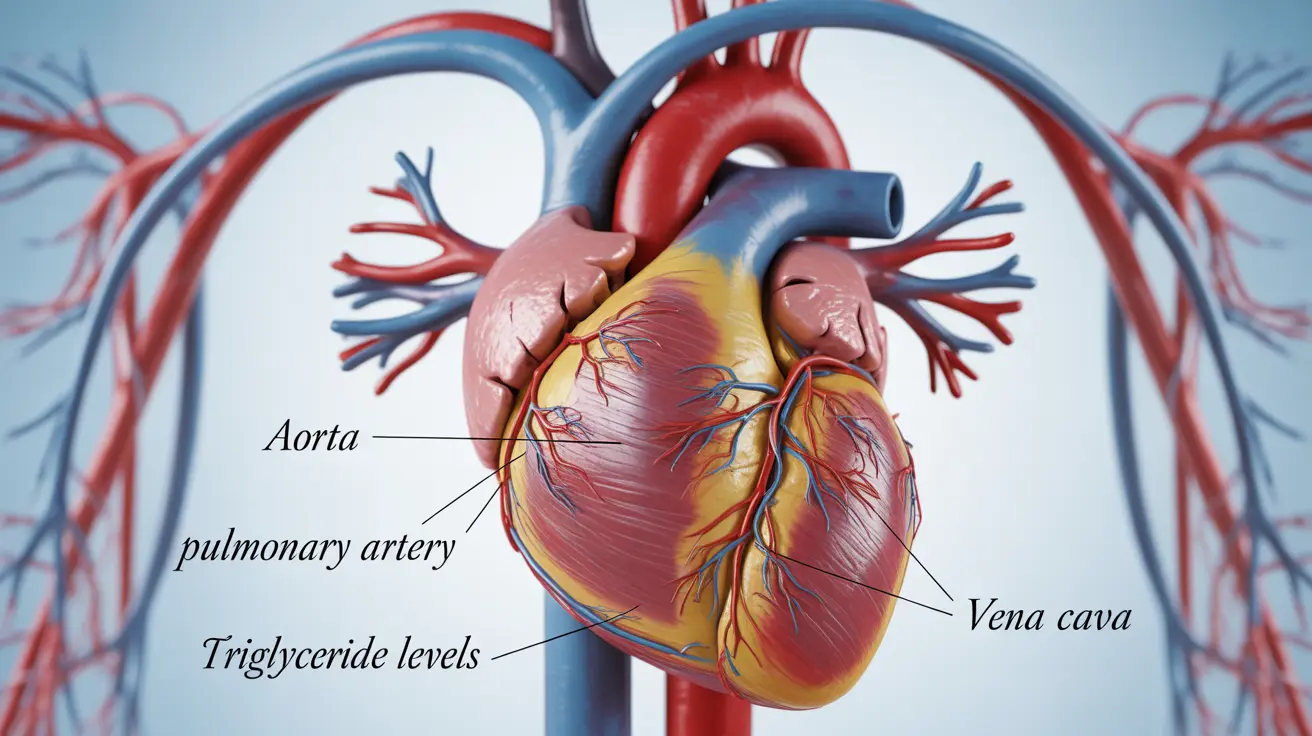Triglycerides play a crucial role in your cardiovascular health, serving as the most common type of fat found in your bloodstream. While your body needs some triglycerides for energy, understanding and managing their levels is essential for maintaining optimal heart health and preventing serious medical conditions.
In this comprehensive guide, we'll explore what triglycerides are, their impact on your health, and practical ways to maintain healthy levels through lifestyle changes and medical interventions when necessary.
What Are Triglycerides and Their Role in Your Body
Triglycerides are a type of blood fat (lipid) that your body creates by converting excess calories it doesn't immediately need for energy. These fats are stored in your fat cells and released between meals when your body requires additional energy. However, having too many triglycerides in your bloodstream can contribute to the buildup of plaque in your arteries.
Causes of High Triglycerides
Several factors can contribute to elevated triglyceride levels:
- Overconsumption of calories, especially from refined carbohydrates and sugars
- Physical inactivity
- Excessive alcohol consumption
- Obesity
- Certain medical conditions (such as diabetes and hypothyroidism)
- Some medications
- Genetic factors
Understanding Triglyceride Levels
Healthcare providers measure triglycerides as part of a standard lipid panel. The following ranges are generally used to classify triglyceride levels:
- Normal: Less than 150 mg/dL
- Borderline high: 150-199 mg/dL
- High: 200-499 mg/dL
- Very high: 500 mg/dL or higher
Health Risks Associated with High Triglycerides
Elevated triglyceride levels can lead to several serious health complications:
- Atherosclerosis (hardening of the arteries)
- Increased risk of heart disease and stroke
- Pancreatitis (inflammation of the pancreas)
- Metabolic syndrome
- Type 2 diabetes complications
Lifestyle Changes to Lower Triglycerides
Dietary Modifications
Making specific changes to your diet can significantly impact your triglyceride levels:
- Limit added sugars and refined carbohydrates
- Choose healthy fats (omega-3 fatty acids)
- Increase fiber intake
- Reduce alcohol consumption
- Control portion sizes
Physical Activity
Regular exercise plays a vital role in managing triglyceride levels:
- Aim for at least 150 minutes of moderate aerobic activity weekly
- Include resistance training 2-3 times per week
- Stay active throughout the day
- Consider working with a fitness professional to develop an appropriate exercise plan
Medical Treatments and Medications
When lifestyle changes aren't sufficient, healthcare providers may recommend:
- Statins
- Fibrates
- Niacin
- Omega-3 fatty acid supplements
- Other prescription medications specific to triglyceride management
Frequently Asked Questions
What are triglycerides and why do they matter for heart health?
Triglycerides are a type of blood fat that serves as an energy source for your body. They matter for heart health because elevated levels can contribute to arterial plaque buildup, increasing your risk of heart disease and stroke.
What foods and lifestyle habits cause high triglycerides, and how can I lower them?
High triglycerides are often caused by excessive intake of refined carbohydrates, sugary foods, and alcohol, combined with a sedentary lifestyle. You can lower them by reducing sugar and refined carb intake, choosing healthy fats, exercising regularly, and maintaining a healthy weight.
What are the risks of having high triglyceride levels, and when should I worry?
High triglycerides increase your risk of heart disease, stroke, and pancreatitis. You should be concerned if your levels are above 150 mg/dL and consult a healthcare provider if they exceed 200 mg/dL.
How are high triglycerides diagnosed, and what is considered a normal range?
Triglycerides are diagnosed through a blood test called a lipid panel. Normal levels are below 150 mg/dL, while anything above this is considered elevated and may require intervention.
What are the most effective treatments or medications for lowering triglycerides?
The most effective treatments include lifestyle changes (diet modification and regular exercise), along with medications such as statins, fibrates, and omega-3 supplements when necessary. The specific treatment plan depends on your individual triglyceride levels and overall health status.




